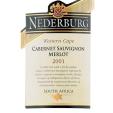 I’m at a Novotel hotel in London, planning to have an embarrassingly early dinner so that I can recover from the sleep I didn’t have last night on the plane. What to drink? The limited wine list offers good diversity, and some completely acceptable wines. What bothers me is how the wines are described.
I’m at a Novotel hotel in London, planning to have an embarrassingly early dinner so that I can recover from the sleep I didn’t have last night on the plane. What to drink? The limited wine list offers good diversity, and some completely acceptable wines. What bothers me is how the wines are described.
Some examples:
- Ropiteau Chablis: ‘combines apple and tangerine notes beautifully’
- Montana Pinot Noir from Marlborough: ‘cranberry fruit flavors’
- Wolf Blass Semillon-Sauvignon Blanc: ‘hints of guava and passion fruit’
- Nederburg Cabernet Sauvignon-Merlot from South Africa: ‘rich cassis and mocha flavors’
- Trivento Shiraz Malbec from Argentina: ‘succulent berry fruits’
And so on.
 Why do so many wine descriptions reduce the taste of a wine to just its aromas and flavors (and only fruity aromatics at that)? Maybe it’s because a wine’s aromatic expression offers something quasi objective to say, as opposed to the more apparently subjective descriptors of body, texture, depth, concentration, and other aspects that are part of the total experience of a wine. A wine drinker can presumably connect with those flavor descriptors and think, ‘That sounds good.’ But ultimately, the differences between a Marlborough Pinot Noir and a South Africa Cab-Merlot blend are far deeper than the choice between cranberry on the one hand and cassis and mocha on the other.
Why do so many wine descriptions reduce the taste of a wine to just its aromas and flavors (and only fruity aromatics at that)? Maybe it’s because a wine’s aromatic expression offers something quasi objective to say, as opposed to the more apparently subjective descriptors of body, texture, depth, concentration, and other aspects that are part of the total experience of a wine. A wine drinker can presumably connect with those flavor descriptors and think, ‘That sounds good.’ But ultimately, the differences between a Marlborough Pinot Noir and a South Africa Cab-Merlot blend are far deeper than the choice between cranberry on the one hand and cassis and mocha on the other.
Accepting that this is what people do – whether I like it or not – I am nevertheless particularly distressed that in mentioning a wine’s aromas and flavors, the typical thumbnail description does not mention the intensity of those aromas and flavors.
Both a Bordeaux and a California Cabernet can have blackcurrant character, but the intensity of that fruitiness is very different. And in that difference hangs a critical factor for determining not only whether a particular wine drinker will enjoy one wine more than the other, but also the food compatibilities of each wine.
Pondering all of this, I ended up drinking a Viña Alcorta Rioja Crianza 2003. It was moderately flavorful, with soft tannins that give the wine a substantial but silky texture, and the wine shows good concentration and length. It’s completely ready to drink now, and it hit the spot for me. Filled almost to the rim, my glass failed to deliver the promised ‘smokey vanilla aroma.’
As for the ‘crushed fruit flavor’ that the menu promised … well, I must admit that I don’t even know what that means.
3
